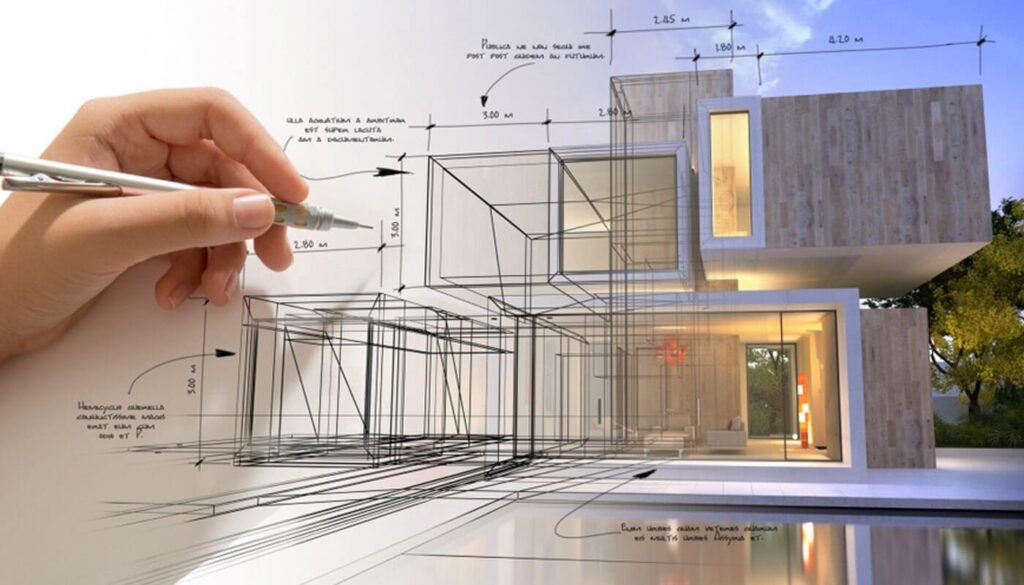A Detailed Review of Architectural Designs and Their Impact on Modern City Preparation and Growth
Building designs have long acted as a mirror to the social worths and technical advancements of their time, playing a vital duty fit contemporary city planning and advancement. From the magnificence of Neoclassicism to the utilitarian technique of Brutalism, each style has presented one-of-a-kind principles that affect city aesthetic appeals and performance. As contemporary obstacles emerge, including sustainability and neighborhood requirements, comprehending these historic structures becomes important. The resulting dialogue not only educates future layout techniques however likewise raises relevant questions concerning the equilibrium between heritage and development in our evolving city landscapes.
Historical Review of Architectural Designs
:max_bytes(150000):strip_icc()/Buildingdesigns-GettyImages-912482942-db55b3af711044a3a42ad1040c6711a9.jpg)
As societies transitioned via the Center Ages, Gothic design emerged, characterized by its verticality and complex detailing, matching the spiritual desires of the age. The Renaissance marked a revival of timeless perfects, merging art and architecture in innovative manner ins which affected subsequent styles throughout Europe.

Today, building styles proceed to evolve, driven by globalization and sustainability worries, reflecting a dynamic interaction between heritage and technology. This historical introduction emphasizes the importance of style as a mirror of societal development and as a stimulant for urban advancement.
Secret Architectural Styles Explained
The variety of architectural styles shows the myriad impacts that shape our built atmosphere, each personifying distinct characteristics and cultural relevances. Trick architectural styles include Classic, Gothic, Baroque, Innovation, and Postmodernism, each standing for unique historical contexts and aesthetic viewpoints.
Classic style, rooted in old Greece and Rome, stresses symmetry, proportion, and making use of columns (cda architects). On the other hand, Gothic design, prospering between Ages, is characterized by pointed arches, ribbed vaults, and flying buttresses, producing a heavenly high quality in basilicas. Baroque design, arising in the 17th century, is noted by majesty, intricate ornamentation, and a dynamic interaction of light and darkness
Innovation, which obtained energy in the early 20th century, focuses on function over form, using brand-new products like steel and glass to produce minimal frameworks. Postmodernism, responding versus the austerity of Innovation, welcomes eclecticism and historic recommendation, usually including spirited aspects and irony.

Influence On Urban Planning
Fit the development of cities, building styles significantly affect urban planning choices. The option of architectural style frequently dictates the visual appeals, capability, and overall personality of urban atmospheres. For example, innovation, with its focus on minimalism and performance, urges open spaces and the combination of technology, shaping city formats that prioritize effectiveness and access. Alternatively, conventional styles might stress historical preservation, causing city designs that maintain cultural heritage and advertise pedestrian-friendly settings.
Additionally, architectural styles can impact zoning policies and land utilize policies. Urban coordinators need to take into consideration the dominating building patterns when creating areas, making sure that brand-new advancements balance with existing structures. This consideration promotes cohesive urban landscapes and enhances community identity.
The implementation of specific building designs can likewise influence socioeconomic variables within a city. For instance, high-end contemporary designs might bring in upscale locals and companies, resulting in gentrification, while more cost effective real estate services might focus on functional and sustainable designs to accommodate varied populaces. Inevitably, the interaction between architectural styles and city preparation develops vibrant cities that show both historical context and modern requirements, shaping the lived experiences of their citizens
Sustainability and Modern Architecture
Building styles play a crucial function in addressing modern challenges, especially in the realm of sustainability. As city locations expand and environmental problems increase, modern design increasingly accepts lasting design concepts that focus on energy effectiveness, source conservation, and very little ecological effect.
Contemporary building activities, such as biophilic design and environment-friendly architecture, advocate for frameworks that integrate with their surroundings, using all-natural materials and promoting biodiversity. These styles usually incorporate renewable resource sources, such as solar panels and wind turbines, to minimize dependence on nonrenewable fuel sources and lower carbon footprints.
In addition, the integration of sophisticated innovations, such as clever structure systems, enhances energy management, enhancing source use while making certain occupant comfort. Ingenious water administration methods, consisting of rain harvesting and greywater recycling, more add to lasting urban environments.
Especially, sustainability expands past ecological worries; it incorporates social and financial dimensions. By promoting neighborhood wellness and promoting inclusivity, modern architectural designs straighten with sustainable advancement goals. The development of architectural practices proceeds to form durable cities that like this not only fulfill the requirements of the present but additionally secure the future for generations to come.
Neighborhood Engagement in Layout
Area interaction in design works as an essential bridge in between engineers and the populations they serve, ensuring that the constructed atmosphere reflects the demands and goals of its users. This joint process welcomes neighborhood members to add their insights and choices, promoting a sense of possession and obligation towards the rooms they occupy.
Effective community involvement utilizes different methods, such as workshops, studies, and public online forums, to gather varied point of views. These techniques assist in a two-way dialogue, permitting engineers to comprehend regional contexts while encouraging homeowners to articulate their worries and wishes. This inclusivity not only improves the style quality but additionally advertises social equity by resolving the special challenges encountered by marginalized groups.
In addition, community involvement can click over here now lead to ingenious solutions that may not emerge in a typical style procedure. By integrating regional knowledge and cultural worths, engineers can develop spaces that reverberate even more deeply with users, boosting usability and sustainability. Inevitably, prioritizing neighborhood involvement in layout processes results in atmospheres that support social interactions, assistance wellness, and reinforce area connections, thereby playing a critical function fit modern-day city landscapes.
Conclusion
Architectural styles have actually greatly influenced modern city preparation and growth, showing developing cultural and technical contexts. As cities proceed to look at here grow and adapt, the recurring dialogue between building heritage and contemporary design concepts will certainly remain essential in developing comprehensive, dynamic rooms that improve quality of life and promote social equity.